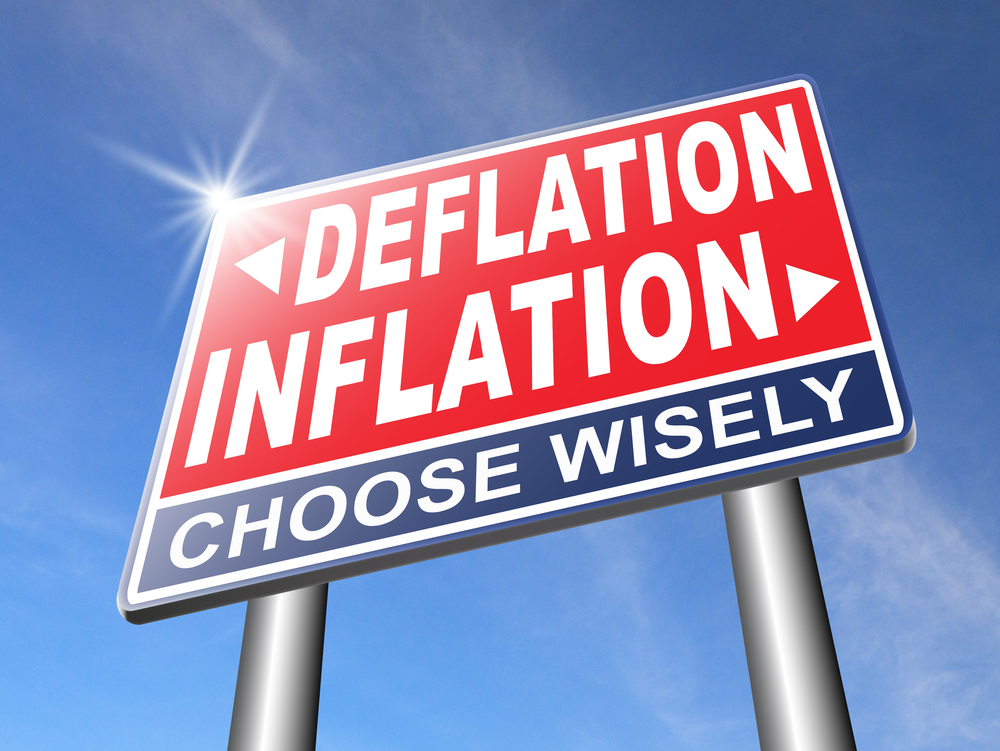In recent years, the specter of inflation has loomed large over the global economy, fueled by unprecedented monetary stimulus measures and supply chain disruptions. As prices have surged, concerns about the erosion of purchasing power and the threat of runaway inflation have dominated headlines. However, amidst this backdrop, an alternative perspective emerges—one that challenges orthodox opinion and suggests that deflation may, in fact, offer a path to economic stability and prosperity.
Over the past four years, the United States has witnessed a staggering 20% increase in the general price level, driven by a combination of factors including the Federal Reserve’s aggressive money printing and disruptions to global supply chains caused by pandemic-related lockdown policies. Inflationary pressures have left consumers feeling the pinch as the cost of goods and services continues to rise, eroding the value of their hard-earned wages and savings.
Amidst these concerns, the concept of deflation emerges as a potential antidote—a phenomenon characterized by a sustained decrease in the general price level of goods and services. While traditionally viewed with trepidation, particularly by policymakers and central bankers, deflation presents several potential benefits that warrant closer examination.
One of the primary arguments in favor of deflation is its potential to enhance purchasing power and improve standards of living for consumers. In a deflationary environment, the cost of goods and services declines over time, allowing individuals to stretch their dollars further and afford a higher quantity of goods and services. This increase in purchasing power can stimulate demand, spur consumption, and support economic growth.
Moreover, deflation can serve as a natural corrective mechanism within the economy, encouraging efficiency and innovation in production processes. As prices fall, producers are incentivized to reduce costs, streamline operations, and innovate to maintain profitability. This dynamic fosters productivity gains, drives technological advancement, and promotes long-term economic competitiveness.
Critics of deflation often argue that it leads to a spiral of declining demand and economic stagnation—a scenario commonly referred to as the deflationary trap. However, this perspective overlooks the resilience of market forces and the adaptive behavior of consumers and producers.
Contrary to the simplistic assumptions of traditional economic models, real-world individuals do not behave as rational actors driven solely by price signals. Instead, they exhibit a complex array of motivations, preferences, and constraints that shape their economic decisions. For example, while textbook economics suggests that consumers would delay purchases in anticipation of lower prices, in reality, individuals often prioritize immediate needs and preferences over speculative future savings. This is something Austrian School economists, with their emphasis on the study of time preference, have long understood.
Similarly, producers are not passive entities that cease production in the face of falling prices. Instead, they adapt to changing market conditions by adjusting production levels, optimizing resource allocation, and innovating to maintain profitability. As long as the fundamentals of supply and demand remain intact, the economy can navigate deflationary pressures without descending into a downward spiral of contraction and stagnation. Afterall, while the producer sells their output for a lower price than previously, they also paid less for the inputs than they would have previously, the percentage of profitability thereby remaining intact.
In conclusion, while the specter of deflation may evoke fears of economic instability and hardship, a closer examination reveals the potential benefits that it can offer. In a world grappling with the consequences of inflationary excess and rising living costs, deflation emerges as a potential antidote—a force for enhancing purchasing power, stimulating innovation, and promoting long-term economic resilience. By embracing deflation and harnessing its potential, policymakers and individuals alike can chart a course towards a more prosperous and sustainable future.
They won’t, but that is another matter.
































